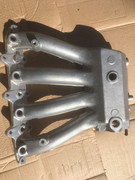cleverusername wrote: ↑Sun May 10, 2020 11:15 am
I don't understand the hatred of sensors, that are pretty robust. Some car models do have problems with sensor failure but is likely down to cheap part or a poor design; that sensors themselves being problematic. The solution is simple, avoid cars and brands with those problems.
I don't get it much either, a long career spannering tells me that sensor failures are relatively rare. Sure the classic crank sensor failure that stops the engine is the one everyone complains about, pointing out that a set of points can be adjusted to get you running again where a crank sensor failure often means a recovery. But MOST sensor failures are just that, you get a management light and sometimes a rev or turbo restricting limp mode, but it will get you home!
And here's the clincher, a crank sensor may last the life of the car, at most, a modern will only get through 2 or 3 in a long hard life (200k+), a set of points needs adjusting and setting up at least every 3000 miles and replacing every 6000. With a lot of classic cars only doing 1000 or so miles a year, it's no big deal nowadays, but I remember the days when ALL cars had points and condensers, did 12000k miles a year despite these limitations and breakdowns from faults or just sheer lack of maintainence of these parts was comonplace to the extent of being totally unremarkable, it was just a fact of life! How quickly we forget!
A lot of modern failures are down to faults in emission control parts that have no direct bearing on engine management, particularly EGR valves and their associated parts.
But here's a thought, when I built the Carledo, the engine and all the electrical parts and sensors on it were used, the engine came from a 60k mile car that I knew was running when removed. I dropped the whole lot in, as it came, 9 years ago and have not changed a single part of the electronics since. Most of it, AFAIK, dates back to the donor car's build date in 1989. The only failure i've had AT ALL is the NEW aftermarket remote HP fuel pump and that died before i'd even managed a proper road test, a second hand Renault one I replaced it with is still going.
Steve

